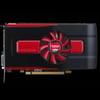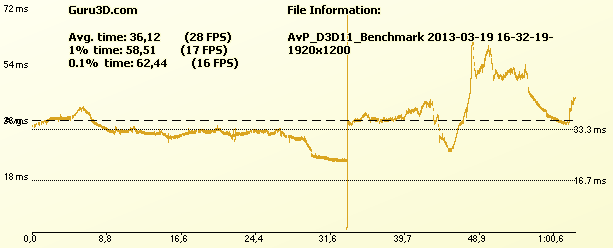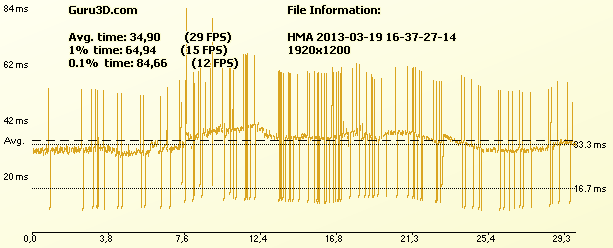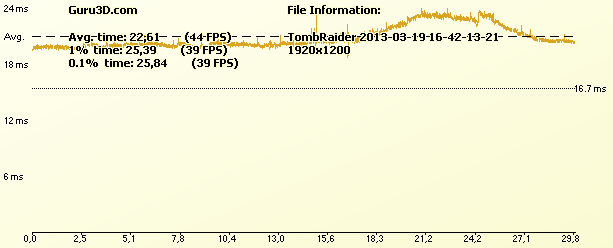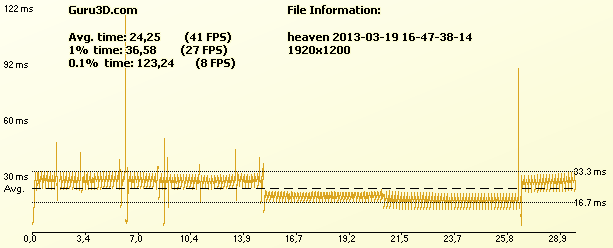Game Experience (Frametime) Analysis
Game Experience (Frametime stutter) Analysis
Lately there has been a new measurement introduced, latency measurements. When you record a certain number of seconds of a recording whilst tracking the number of frames per second, then output that in a graph and then zoom in, you can see the turnaround time for the GPU. Basically the time it takes to render one frame can be monitored and tagged with a number in Milliseconds, this is latency. One frame can take, say 17ms. A colleague website discovered a while ago that there were some latency discrepancies in-between NVIDIA and AMD graphics cards with results being worse for AMD, especially in multi-GPU solutions. There is another problem with latency measurements, the vast majority of people don't like it, or don't understand it. Our forum reader base seems to really love this measurement, however when I asked some generic end users they just simply do not have a clue on how to interpret the charts based on latency measurements. We'll start off our reference reviews with some games analyzed.
But basically what these measurements show are anomalies like small stutters that you can sometimes (and please do read that well, sometimes) see on screen. Below, I'd like to run through some titles with you. Mind you, average FPS matters more than frametime measurements.
It's just an additional page or two of information that from now on we'll be serving you and these charts are intended for a more enthusiast reader base only.
So what are we looking at? Above, we recorded 60 seconds of the AVP benchmark. Each frame is recorded and output as latency, i.e. the time it takes to render one frame. Now if the GPU has an issue or if there is something going on in the PC, the stuff that you see on screen could result in a stutter or glitch. Now, in these charts if you see a spike, then the latency to draw a frame or multiple frames will go up dramatically. That effect translates to what you see on your monitor. This spike could mean a glitch or stutter that you see on your monitor for a fraction of a second (or repeatedly).
Above, Alien versus Predator measured over one minute. Absolutely flawless and smooth. The one spike in the middle of the chart is where the benchmark changes to another sequence.
Above, Hitman Absolution. The title is known for stuttering in the benchmark sequence with AMD cards. Realistically this looks bad, the reality however is that spikes from say 30ms up to 40ms you probably will not even notice, 50ms and above start becoming troublesome.
In the latest 13.3 Beta drivers AMD has addressed micro stuttering though the codebase for this was not included in the R7790 press driver. We'll retest one the new driver is final.
Above, Tomb Raider - butter smooth, the frametime latency is so low that it it almost can't be charted. We measured the standard benchmark for the first 30 seconds. Not one spike... really not one.
Above, Unigine Heaven - I wanted to include a synthetic test as well. Unigine Heaven is very well suited for that. over the 30 seconds measured there are two significant spikes. The reality is that this one translates into a small visible glitch on screen that you'll hardly even notice. In fact only with the trained eye can you notice these things.
This is my message to you guys, frametime measurements have been taken WAY out of proportion. What you see in these charts sometimes looks alarming with massive spikes, whilst your average end-user will never ever even see it on screen.
This is our first introduction with frame-time, or what I like to call Game Frame Experience measurements. Expect an extended dedicated article on this topic from us real soon.
